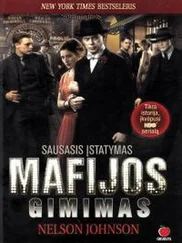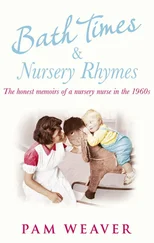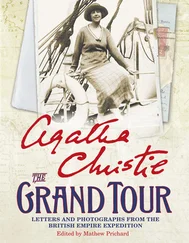Nelson Johnson - Boardwalk Empire - The Birth, High Times, and Corruption of Atlantic City
Здесь есть возможность читать онлайн «Nelson Johnson - Boardwalk Empire - The Birth, High Times, and Corruption of Atlantic City» весь текст электронной книги совершенно бесплатно (целиком полную версию без сокращений). В некоторых случаях можно слушать аудио, скачать через торрент в формате fb2 и присутствует краткое содержание. Жанр: Старинная литература, на английском языке. Описание произведения, (предисловие) а так же отзывы посетителей доступны на портале библиотеки ЛибКат.
- Название:Boardwalk Empire: The Birth, High Times, and Corruption of Atlantic City
- Автор:
- Жанр:
- Год:неизвестен
- ISBN:нет данных
- Рейтинг книги:5 / 5. Голосов: 1
-
Избранное:Добавить в избранное
- Отзывы:
-
Ваша оценка:
- 100
- 1
- 2
- 3
- 4
- 5
Boardwalk Empire: The Birth, High Times, and Corruption of Atlantic City: краткое содержание, описание и аннотация
Предлагаем к чтению аннотацию, описание, краткое содержание или предисловие (зависит от того, что написал сам автор книги «Boardwalk Empire: The Birth, High Times, and Corruption of Atlantic City»). Если вы не нашли необходимую информацию о книге — напишите в комментариях, мы постараемся отыскать её.
Boardwalk Empire: The Birth, High Times, and Corruption of Atlantic City — читать онлайн бесплатно полную книгу (весь текст) целиком
Ниже представлен текст книги, разбитый по страницам. Система сохранения места последней прочитанной страницы, позволяет с удобством читать онлайн бесплатно книгу «Boardwalk Empire: The Birth, High Times, and Corruption of Atlantic City», без необходимости каждый раз заново искать на чём Вы остановились. Поставьте закладку, и сможете в любой момент перейти на страницу, на которой закончили чтение.
Интервал:
Закладка:
The inability of the more traditional denominations to serve the needs of Black migrants stimulated the growth of storefront churches. These churches made it possible for Blacks to worship in a manner in which many had practiced in the South. Their religious rites were highly emotional, creating a personal form of worship in which all the members of the congregation became involved. Their pastors preached about a very real heaven and hell. Their church services appealed to those Blacks searching for relief from the insecurities of this world through salvation in the next.
The first Spiritualist church in Atlantic City was founded in 1911 by Levi and Franklin Allen. From that church, 10 other churches sprang up almost immediately. While the sermons of their ministers were other-worldly, these tiny sects never lost sight of the hardships their members had to overcome in this world. The Spiritualist church provided material as well as spiritual assistance to help Southern migrants deal with urban life. A fundamental teaching of Spiritualist doctrine was to serve the community by raising funds to help feed and clothe the poor. Like the Spiritualist churches, the Holiness churches of Atlantic City also found support among the lower class, who were as much devoted to the community as to God. A cornerstone of their church doctrine was never to permit a member to be without the bare necessities of food, shelter, and clothing.
Over time, Atlantic City’s Black churches became a social safety net for their members in need. But Sunday was only one day in the week. To build what was required to deal with White racism, namely, a city within a city, Blacks needed more than their church.
Confronted by discrimination and forced segregation, Black leaders began to establish social agencies in the Northside at the turn of the 20th century. The first social agency established by Blacks was a home for the elderly. The Old Folks Home and Sanitarium opened its doors shortly around 1900. Its purpose was to provide convalescent care for Blacks in need, regardless of religion, 65 years or older. The home was run by a Board of Managers consisting of 15 persons who investigated and approved all admissions and established charges depending upon need. The home, which was located at 416 N. Indiana Avenue, was managed well and on July 14, 1922, the Board of Managers had a formal ceremony at the Price Memorial Church, where the mortgage was burned in celebration.
Local Blacks were denied access to the city’s Young Men’s Christian Association (YMCA). Prominent businessman George Walls organized a group that conceived a plan for the Northside YMCA. Walls was a successful bathhouse operator and a dynamic leader of the Northside who spearheaded numerous causes and lent a helping hand to many Blacks. The “Northside Y” was only one of his accomplishments.
The Northside YMCA operated out of a small cottage on North New York Avenue for more than 30 years. In 1930 it moved to a new building on Arctic Avenue, which contained a gymnasium, recreation room, showers, and dormitory accommodations. Funded entirely through private donations, the Northside YMCA was constructed at a cost of approximately $250,000. The Arctic Avenue branch of the YMCA, as it came to be known, was directed by C. M. Cain. In 1930, a staff of seven secretaries carried on a general character-building YMCA program, with a membership of more than 250 young men. The Arctic Avenue YMCA became the headquarters for many Black community organizations and clubs. Among them were the Northside Board of Trade, the Northside Business and Professional Woman’s Club, the Lincoln University Alumni Associates, the Young Men’s Progressive Club, the Great Building and Loan Association, the Lion’s Social Club, two of the four Black Boy Scout Troops, and the Woman’s Home Missionary Society.
In 1916 the Northside Young Women’s Christian Association (YWCA) was founded by Maggie Ridley, an active civil leader who was co-owner of the popular Ridley Hotel and one of the founding members of the Jethro Memorial Presbyterian Church. The Northside YWCA operated an employment bureau and provided counseling services to young women. Its facilities were too small for recreational programs so young women used the gymnasium facilities at the Arctic Avenue branch of the YMCA.
As the permanent Black population increased, numerous social societies were established. These groups were often “secret societies,” akin to the Masonic Order. These secret societies were one of the vehicles used by Blacks to cope with their minority status. As early as the Revolutionary period, free Blacks found it desirable to join together for social and cultural improvement, economic self-help, and mutual relief. They did this through secret societies. These societies provided their members with one of the few opportunities they had for group expression and cooperation outside of the church. By 1900, Atlantic City had more than a dozen secret societies, among which were the Prince Hall Masons, the Independent Order of Good Samaritans, the Grand United Order of True Reformers, and the Elks. Societies such as the Masons and Elks emphasized moral and social uplift of their race through the conduct of individual members and provided charity to the less fortunate. The Good Samaritans and True Reformers took the lead in providing insurance and business loans for their members. All these societies met at Mason’s Hall at North Michigan and Arctic avenues.
Meeting places like the Mason’s Hall and the Northside YMCA were critical to a Black social structure. But informal opportunities were also needed. Denied access to the hotels, restaurants, and recreational facilities of the Southside, enterprising Blacks created their own places of amusement. The first known amusement house where Blacks could gather to drink and socialize was established by M. E. Coats in 1879. Another early café and dance hall was Fitzgerald’s Auditorium on North Kentucky Avenue. Built in 1890, Fitzgerald’s grew in popularity, becoming a bar, restaurant, nightclub, and gambling room. During the Depression, Fitzgerald’s was renamed “Club Harlem” and became one of the most chic and talked about nightclubs in the Northeast, frequented by stylish Blacks and Whites. In 1919, the “Waltz Dream,” a large recreation center and dance hall at North Ohio Avenue, was established by a Mrs. Thomas, a White woman from Philadelphia. There were weekly wrestling and boxing tournaments, as well as basketball games, to sold-out crowds. The Waltz Dream was the site of many Black charity events and when dances were held at the hall, popular Black orchestras played to capacity crowds of more than 2,000, young and old alike.
In time, the Northside became a self-contained, vibrant community with a wide range of successful Black-owned businesses. The main street of the Black community was Kentucky Avenue. In addition to night spots like Club Harlem, the Northside had its own retail stores, boardinghouses, restaurants, funeral homes, and theaters, which provided a rich life serving most of the Blacks’ needs. As for the fire safety needs of the densely populated Northside, there was an all-Black fire company. Engine Company #9 with two platoons and Truck Company #6 with two platoons had their own segregated firehouse at Indiana and Grant avenues. Engine Company #9 earned a national reputation for excellence throughout the country. It played a major role in fighting all the city’s fires and held the city record for efficiency six years in a row.
Blacks had developed their own city in response to the racism of Atlantic City’s White population. However, there remained two areas where Blacks were unable to build their own institutions and continued to be the victims of racial prejudice: education and healthcare.
There was no discrimination in the school system during the early years of the resort. As long as their numbers remained small, Blacks posed no threat. But as the White community hardened its stance on integrated neighborhoods, so too did it shrink from integrated schools as the number of Black pupils grew.
Читать дальшеИнтервал:
Закладка:
Похожие книги на «Boardwalk Empire: The Birth, High Times, and Corruption of Atlantic City»
Представляем Вашему вниманию похожие книги на «Boardwalk Empire: The Birth, High Times, and Corruption of Atlantic City» списком для выбора. Мы отобрали схожую по названию и смыслу литературу в надежде предоставить читателям больше вариантов отыскать новые, интересные, ещё непрочитанные произведения.
Обсуждение, отзывы о книге «Boardwalk Empire: The Birth, High Times, and Corruption of Atlantic City» и просто собственные мнения читателей. Оставьте ваши комментарии, напишите, что Вы думаете о произведении, его смысле или главных героях. Укажите что конкретно понравилось, а что нет, и почему Вы так считаете.












